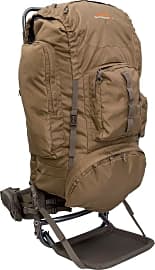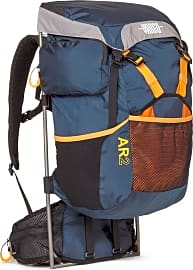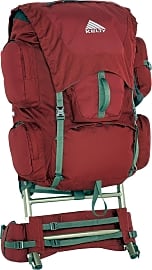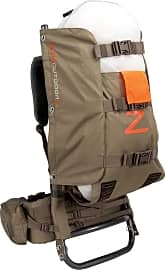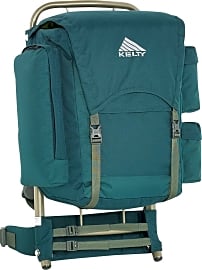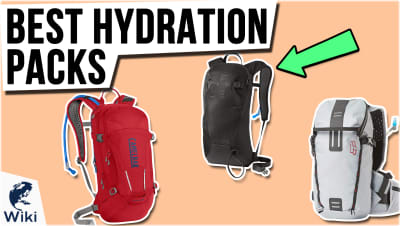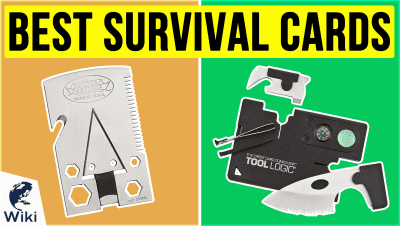The 7 Best External Frame Packs

This wiki has been updated 38 times since it was first published in March of 2016. For serious outdoor adventures, you may want to consider one of these external frame packs. They position the load high on your back, allowing good weight transfer to the hips and an upright walking posture, while offering a bit more rigidity than internal models. Plus, they work great in hot weather, since the frame keeps the pack away from your body, creating lots of airflow. When users buy our independently chosen editorial selections, we may earn commissions to help fund the Wiki.
Editor's Notes
July 16, 2021:
Sadly, the Kelty Yukon is no longer in production, but the Kelty Trekker 65L is actually a bit more versatile and is still readily available. If you can afford it, the Badlands Ox is still the ultimate premium choice for dedicated hunters, although the Alps OutdoorZ Commander is close second and costs a fraction as much. In fact, for even less, you can pick up the Alps OutdoorZ Commander Lite and you'll still be satisfied, as long as you don't need to carry the absolute heaviest load possible.
April 22, 2020:
Kelty and Alps remain two of the most reliable companies in this marketplace, with the Kelty Yukon Hiking offering perhaps the best value of any option out there, with a generous capacity, a lightweight construction, and a spot for a hydration bladder. There's even a miniature style of this bag, called the Kelty Sanitas, which is designed for kids.
Still, the Badlands Ox proved itself to be a serious contender with the ability to very comfortably carry either a rifle or a bow, making it a smart choice for the hunter who likes to mix up their armaments. Its camo finish should blend in nicely with a wooded surrounding, but it's interesting to note that it doesn't offer the same orange safety accents that you see so clearly on the Alps OutdoorZ Commander Lite. That bag is closer to the frame-only purchases that many top-tier hikers and hunters prefer, as you can get a frame that's best fit to your torso length and find an appropriate bag for it afterward. That is, however, a much more expensive proposition than these offerings.
Special Honors
Mystery Ranch Terraframe 80 If you can't decide between an internal or an external model, this option serves as a hybrid between the two. It positions on your shoulders and hips more like the former, but can support up to 150 pounds with its enclosed carbon fiber skeleton. That said, it sits against your back without a lot of air flow, so it's best suited for cold weather and high-altitude expeditions. mysteryranch.com
Classic Gear, Modern Take: The External Frame Pack
If multiple people will be using the same hiking pack, an external frame pack can be a wise move.
At first blush, one might be forgiven for thinking the external frame pack is an outdated piece of gear. These backpacks were once ubiquitous among hikers, explorers, soldiers, and anyone else who had to tote large volumes of gear over long distances, but began to be usurped by the internal frame backpack in the years following the development of the first of these packs. George Lowe, founder of the now global Lowepro brand, designed the first internal frame backpack in his own home in the late 1960s, for reference.
While for many people and purposes internal frame hiking packs are indeed the best way to carry gear, the external frame pack remains viable and popular, and for a number of good reasons. The primary reason many people are turning back to external frame backpacks is the ease of adaptability they afford a user.
If you have an internal frame backpack, your pack may have a carrying capacity of anywhere from fifty liters to eighty liters or even more; regardless of how large the storage capacity of these types of bags may be, it is finite. With most external frame packs, however, you can adjust the compartments connected to your pack, adding more storage room when you need it, and removing cargo space you don't need to reduce weight or to allow for the connection of other gear.
Be sure to carefully consider the compartments and attachment points that come with a prospective external frame pack in the context of your preferred outdoor activities. If you are a hunter, you need to make sure your pack will allow you to easily strap on your rifle (or bow), for example. The winter trekker might need the ability to lash on a pair of snowshoes or even to secure cross country skis and poles. On the other hand, the excellent airflow allowed by the design of most external frame backpacks also makes these great choices for use in hot weather. The exposed frame itself offers excellent gear securing options with bungee cords or straps, but do try to find a bag that is already well suited to your needs.
If multiple people will be using the same hiking pack, an external frame pack can be a wise move. Many external frame backpacks feature a telescoping frame design that makes it remarkably easy to raise or lower the main hip straps, reorienting the placement of the entire bag as needed for people of varied height and torso size.
So, when trying to pick the right external frame pack, the most important thing you can do is select the straps, padding, and adjustment features that best suit your needs. These elements of the pack cannot be changed, only adjusted; the type and placement of the cargo compartments and attachment types and points can be modified as needed for each given user or for the type of adventure on which you are next to embark.
A Few Words On Proper Gear Loading
The closer you can align the gear on your back with your natural center of gravity, the better you will be able to carry it over long distances, and the less strain and fatigue you will endure. Contrary to popular misconception, this does not mean placing the heaviest items you need to carry low against your torso, but rather means carrying them higher up and close to your center of mass. In fact the lightest gear you have — including that down stuffed sleeping bag and your microfiber fleece jacket — should be at the bottom of your pack.
To be precise, with an external frame hiking pack, you should place the majority of your weigh as high as possible in the pack and as close to your shoulders as the pack's design allows. This load placement will allow you to maintain a more upright, natural stance and to compensate for your burden as little as possible as you hike. The more you can walk (and stand) in a natural manner, the more comfortable you will be, and the less other parts of your body will have to endure the strain caused by added pounds of gear. If you put heavy items too low, they will pull you backward, forcing you to dramatically overcompensate by leaning forward and putting undue stress on your back, thighs, and more.
If you need to attach additional gear to your external frame backpack, try to do so on the sides of the pack, rather than to its back. If you can evenly distribute gear on both sides of your pack, then your balance and center of gravity will not be affected (save for the effect of adding even more weight to your overall load, of course).
A Look At Packs From The Past
As noted above, the now familiar internal frame hiking packs have only been around for about a half century. Backpacks in general, on the other hand, and external frame packs in particular, have been used by humans for thousands of years.
The former would be carried on a stave of wood, the latter slung over the back.
One of the oldest known external frame backpacks belonged to the famous mummy known as Otzi, a prehistoric shepherd whose frozen body found in the Alps in the early 1990s. Otzi lived some 5,300 years ago, yet seems to have been carrying gear in a backpack with a design not unlike the modern external frame pack.
Ancient Roman soldiers would carry one of two packs (or to heft both) known as the Scarina and the Loculus. The former would be carried on a stave of wood, the latter slung over the back. The development of an ideal means of carrying of infantry gear would be an ongoing process, with the forerunner of many modern packs not developed until the Civil War era.
The Norwegian Sekk Med Meis backpack came into regular use during the 1800s. This wooden framed pack's name literally translates as the pack with a frame and would help inspire the development of innovative new gear.
Today many people around the world still carry everything from produce to weaponry to building materials on their backs day in and day out, and the majority of those so doing are still using a variety of external frame pack.


